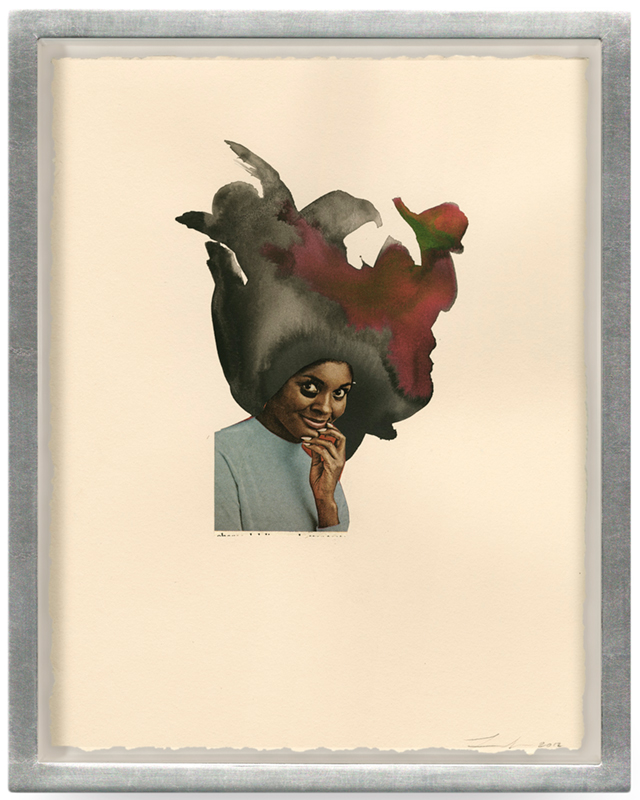That notion of fragmentation, especially of the body, is prevalent in our culture, and it’s reflected in my works. We’re fragmented not only in terms of how society regulates our bodies but in the way we think about ourselves […] My collages combine images of heads belonging to black women with the addition of ink washes to illustrate their hair. I can trace my original interest in found images to a discovery I made of these old Ebony magazines belonging to my grandmother. I found them really satisfying to look at, because they’re so contextual — from a particular time and for a particular audience. From there, I started collecting tons of Ebony and Jet magazines and other, similarly themed printed matter, ranging from the late 1930s through till the late 1970s. For me, the images hearken back to my childhood, but are also a lens through which to see the past fifty years in American history.
But what’s just as important as the photographic components are the more tactile, immediate elements, such as the inks I use. With ink, there’s a free-form, spontaneous quality to it that complements the more methodical process that is involved in the selection and placement of the photographic or found image. Working with ink is very much about being in the moment, and as a result there’s a degree of subconsciousness that comes through. – Lorna Simpson
[excerpted from interview with the artist in The Paris Review]
